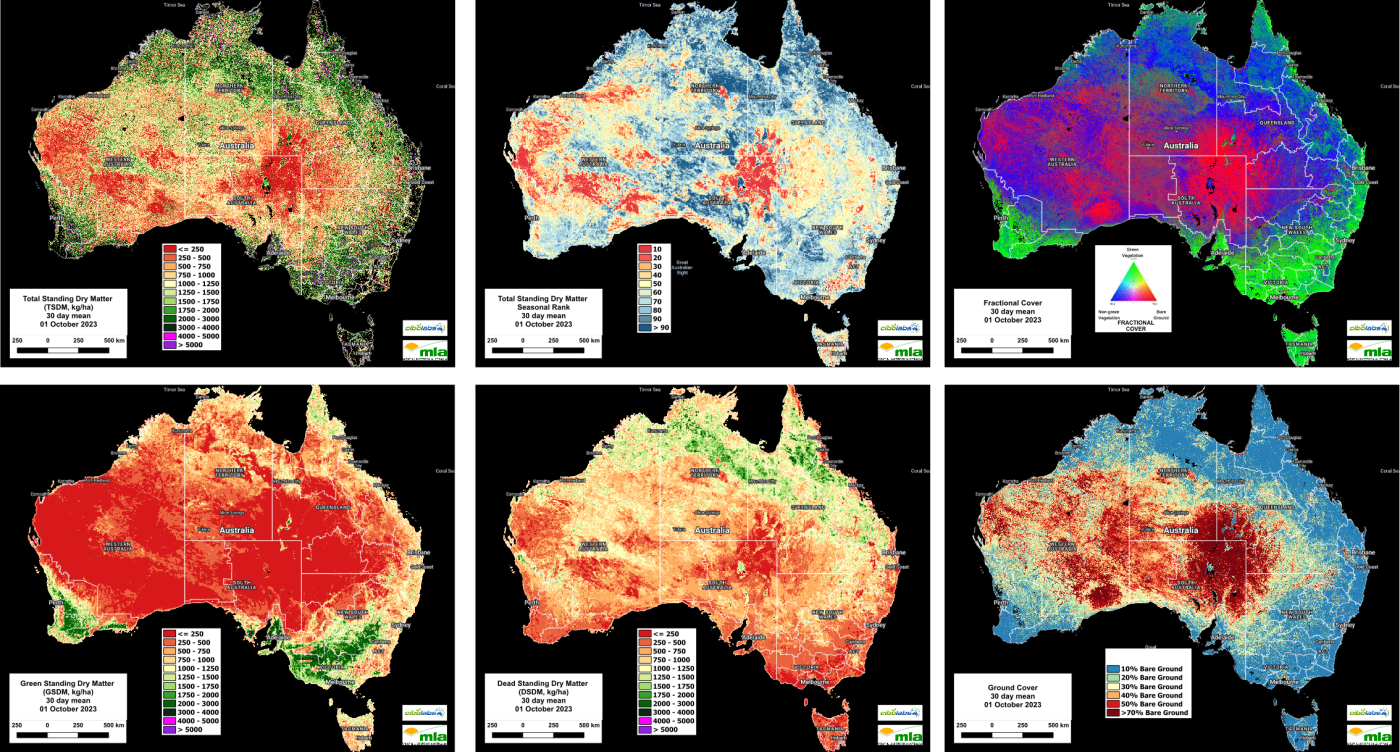
This is the second in Sheep Central’s fortnightly series providing an update on pasture conditions using Cibo Lab’s National Feedbase Monitor….
RAINFALL events in the period from 18 September through to 30 September have remained largely restricted to the south-east of NSW, Victoria and Tasmania.
These events, along with short-term heat periods have contributed to increased variability in pasture biomass nationally.
Areas in central Australia with less than 500kg Total Standing Dry Matter (TSDM)/ha have expanded, particularly in western Queensland, central and western NSW, South Australia and Western Australia.
Total Standing Dry Matter
While it is notable that areas of the Northern Territory, Kimberley region in Western Australia and the Gulf Country of Queensland continue to have biomass levels above 1700kg/DM/Ha, the overall area where this applies has contracted in the last two weeks (Image 1).
Late and isolated thunderstorms in central Victoria and the Riverina in NSW have resulted in some areas of growth and increases in Total Standing Dry Matter.
A similar pattern of response to storms is notable across north Queensland.
Seasonal Comparison Total Standing Dry Matter
These changes are particularly noticeable in the seasonal comparison of TSDM (Image 2). Much of Central Queensland, northern NSW and Western Australia are now 50% or lower than the long-term seasonal average.
Fractional Cover (Growth)
Pasture Biomass Growth events (as indicated by Fractional Cover – Image 3) indicate little change in growth across the continent. Areas that have received rainfall in the past two weeks have continued to see pasture growth events, however, the inland regions largely comprise of non growing or non-photosynthesising biomass.
Green Total Standing Dry Matter
The combined impact of low rainfall, heat events and some late frosts have reduced the levels of Green Standing Dry Matter (Image 4) very noticeably across NSW and into central Victoria.
Areas in southern NSW that previously had in excess of 1700kg Green Standing Dry Matter / Ha, have now decreased significantly. This is noticeable in the western Riverina and south west slopes.
In the Northern Territory levels of Green Standing Dry Matter / Ha have also fallen particularly across the Barkly and Victoria River regions.
Dead Standing Dry Matter
Levels of Dead Standing Dry Matter (Image 5) have fallen significantly across NSW, southwestern Queensland, and western Australia.
In NSW there is on average less than 1000kg Dead Standing Dry Matter / Ha across all regions.
In Victoria the amount of Dead Dry Standing Material is lower again, averaging below 500Kg/DM /Ha.
While in the north, the areas where Dead Dry Standing Dry Material exceed 1750kg/Ha are confined to smaller areas of the eastern Barkly.
The decline in Dead Standing Dry Matter combined with low levels of Green Dry Matter are the principal reasons for the continued reduction in the national feedbase levels in the past 14 days.
Monthly Ground Cover levels
National Ground Cover levels (30 day rolling average – Image 6) have remained largely unchanged.
Despite declines in Total Standing Dry Matter, ground cover levels remain very high with much of eastern Australia, south west Western Australia and northern Australia maintaining cover at 80% or higher.
- Stand by for a separate explainer article from Cibo Labs in coming days, looking into the use of terms like ‘dry’ versus ‘dead’ in describing pasture conditions.
The Cibo Labs National Comparison can be used to freely access these layers (https://www.cibolabs.com.au/products/national-comparsion/) to view the most recent images from a national, state or catchment level.
This tool can complement the Australian Feedbase Monitor which can also be created within the Cibo Labs Web Site www.cibolabs.com.au

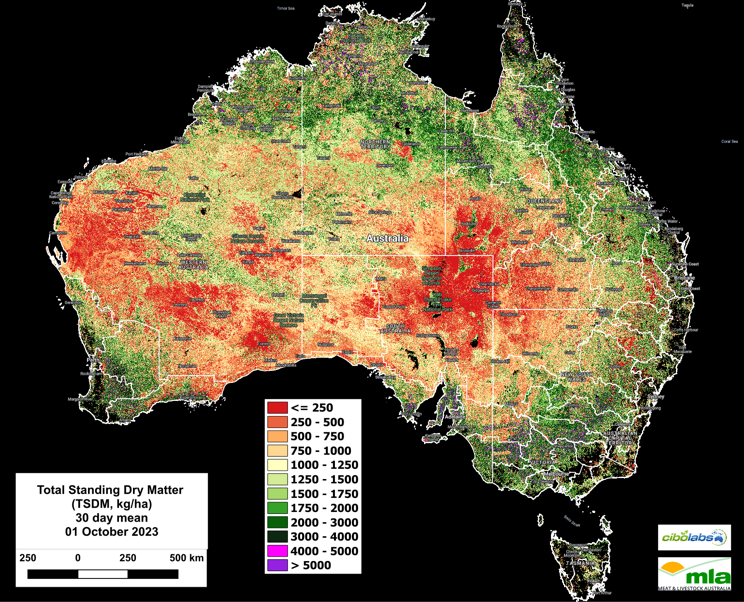
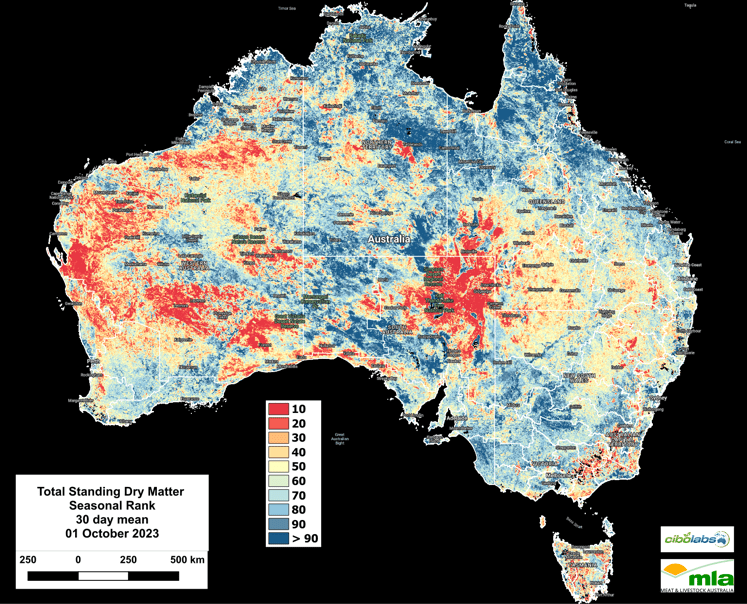


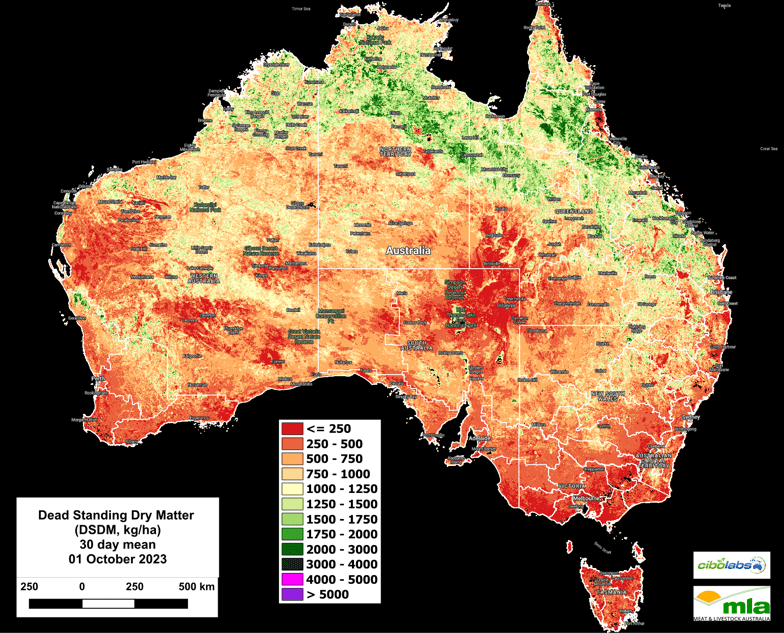
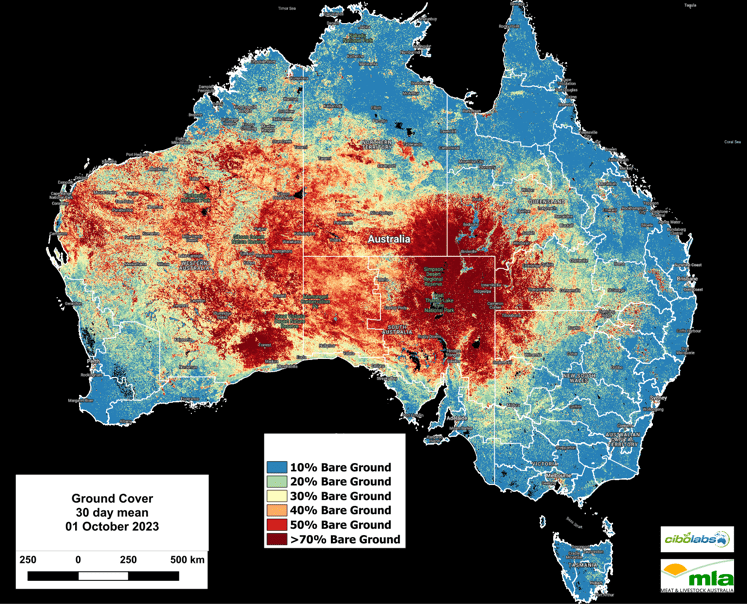
HAVE YOUR SAY